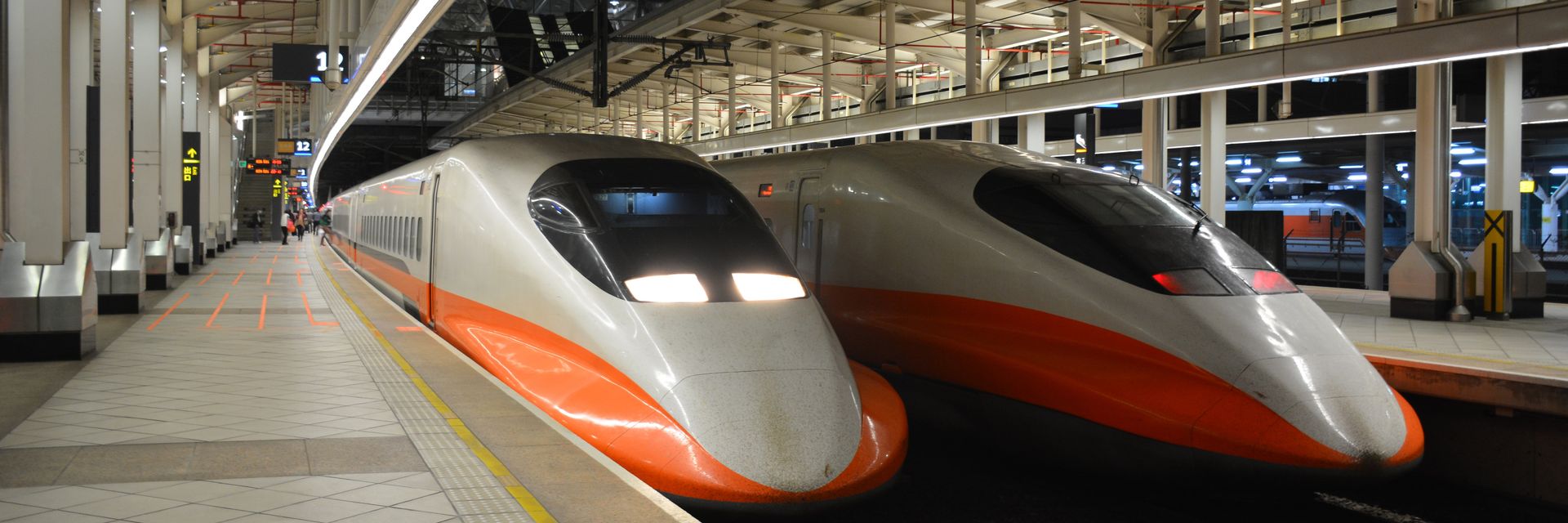Trains have irrevocably changed the world, and they’ve continued to evolve along with the times. Today, trains are becoming more and more futuristic, speeding faster than ever before and utilizing cutting-edge green technology. From Japan’s stunning innovations in high-speed rail to SpaceX’s astounding hyperloop prototypes to the environmental movements placing their hopes on green transit, here’s a look at how trains are blazing a path towards the future.
◊
When I boarded the train from Rome to the southern city of Bari, Italy, I was prepared for a beautiful journey – but not for the way the countryside seemed to come alive as I saw it from the train window. Nor was I prepared for the ideas that would come to mind on that smooth journey.
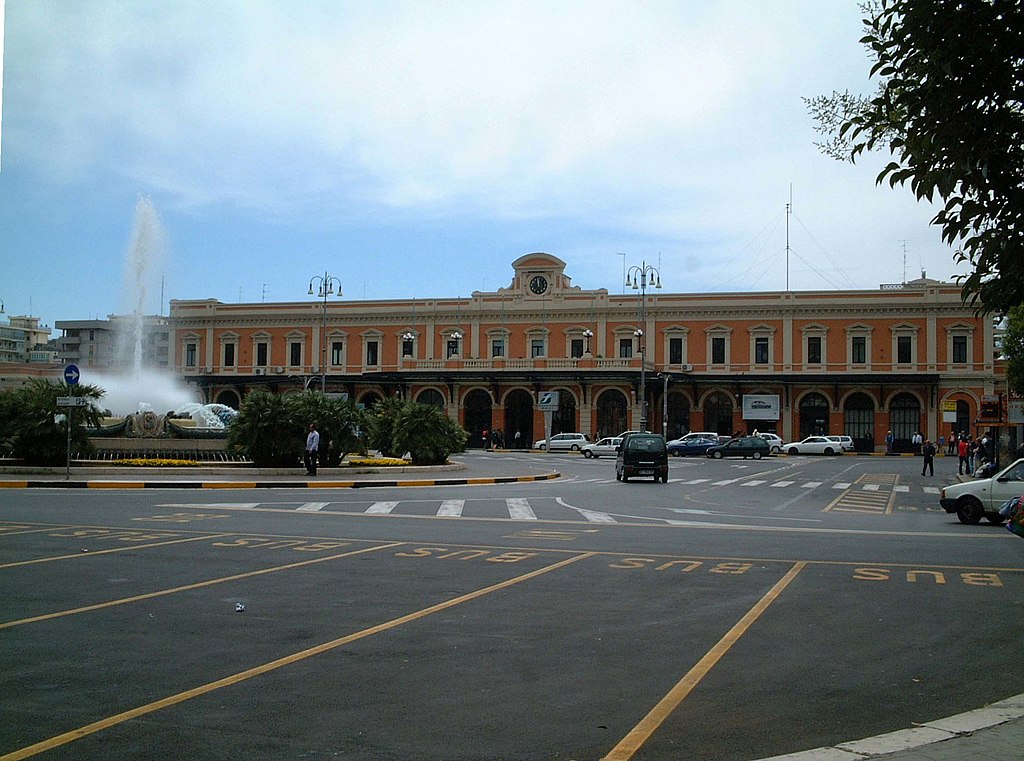
Bari, Italy train station. (Image Credit: Haragayato, via Wikimedia)
Many a train-rider has been inspired by the mesmerizing rhythm of rail transit – if not always by the experience of being on trains, then by the destinations beyond the stations on either end. In the mid-1800s, trains criss-crossed the world and altered the course of history. Millions of people were exposed to new ideas and cultures, effectively kickstarting the modern era.
In the century that followed, trains played a pivotal role in shaping the explosion in commerce and cultural exchange that would come to define the 20th century. Large-scale transit systems rippled across the world, connecting Europe to Asia to Africa.
With the rise of industry and modernity came a host of problems, as glaring economic inequality, environmental destruction, and international conflict accompanied every spike in innovation. Today, climate change – the ultimate consequence of unchecked innovation – presents an existential threat to humanity as we know it. But in an ever-changing world, one thing is for certain: Human technology has the ability to catalyze tremendous achievements, and the history of trains shows us that we can change the world with our innovative capabilities.
Over the past few centuries, trains have evolved along with every twist and turn of the times. Rail transit really began to metamorphose in the latter half of the 20th century, when pioneering engineers created blueprints for trains that were faster, more efficient, and more environmentally friendly than anyone had dreamed.
Transit Tech Gets Futuristic: High-Speed Rail Catches On
The early 1960s saw steam engines fully replaced by diesel, an event that catalyzed a new era of rail transit. Around this time, the transit industry also saw a spike in interest in high-speed trains that used alternative fuel services and could travel extraordinarily fast.
As speeding cars and air travel became more prevalent, trains had to move faster and faster in order to keep up with the times. Trains designed for commercial operation hummed along at 83 miles per hour in the 1930s, but by the 1950s, speed was all the rage in the world of trains.
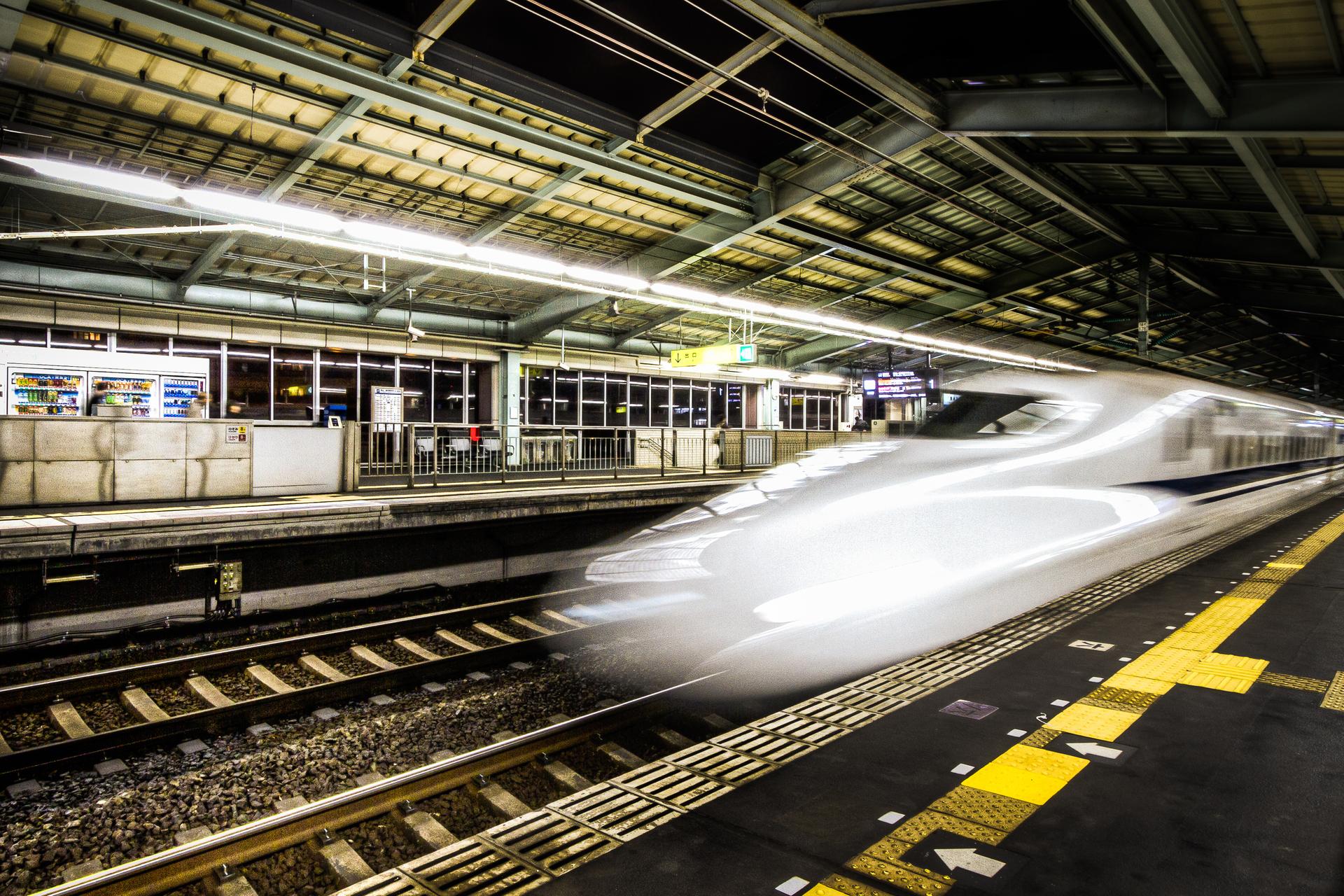 Hayabusa super express
Hayabusa super express
(Image Credit: Nanashinodensyaku, via Wikimedia)
Inventors continued to focus on groundbreaking train technologies, each more futuristic and cutting-edge than the next. In 1964, just in time for the Tokyo Olympics, Japan unveiled its first Shinkansen bullet trains, which were capable of zipping along at 130 miles per hour. After Japan’s breakthrough, Europe quickly followed suit. France’s jet-powered Aérotrain prototype reached 270 miles per hour in 1974, and high-speed rail criss-crossed Europe over the next 50 years.
“I like trains. I like their rhythm, and I like the freedom of being suspended between two places, all anxieties of purpose taken care of: for this moment I know where I am going.” – Anna Funder, Stasiland: Stories from Behind the Berlin Wall
Italy and Germany installed high speed rail systems in 1988. Spain followed suit in 1992, Belgium in 1997, the United Kingdom in 2003, and the Netherlands in 2009. China’s impressive high-speed rail system kicked off in 1997, and today, the nation’s high-speed rail network is by far the longest and most extensively used in the world.
Today, conventional high-speed trains are generally able to reach speeds of over 155 miles per hour, but many can obliterate that speed.
Japan currently holds the world record for fastest train ever. In 2015, its L0 series ran at 375 miles per hour, covering 1.8 kilometers in 11 seconds. But those weren’t your average bullet trains. To reach such speeds, they had to rely on an even more futuristic technology.
High-Tech Trains of the Future: Maglev, Hyperloops, and More
In the early 1900s, innovators such as Emile Bachelet and Robert Goddard came up with early prototypes for magnetic levitation (also known as maglev) technology. With maglev, train cars ride on cushions of air created by an electromagnetic current between an onboard and off-board magnet. Importantly, maglev trains don’t rely on fossil fuels, making them a promising part of many plans for a greener transit system.
Maglev technology finally began to take off in the 1960s, and the first successful maglev train left the station in Japan in 1969. Japan is one of three countries in the world that boasts a maglev transit system today, along with South Korea and China – though currently, a multi-billion-dollar maglev train between Washington, DC and New York City is under consideration.
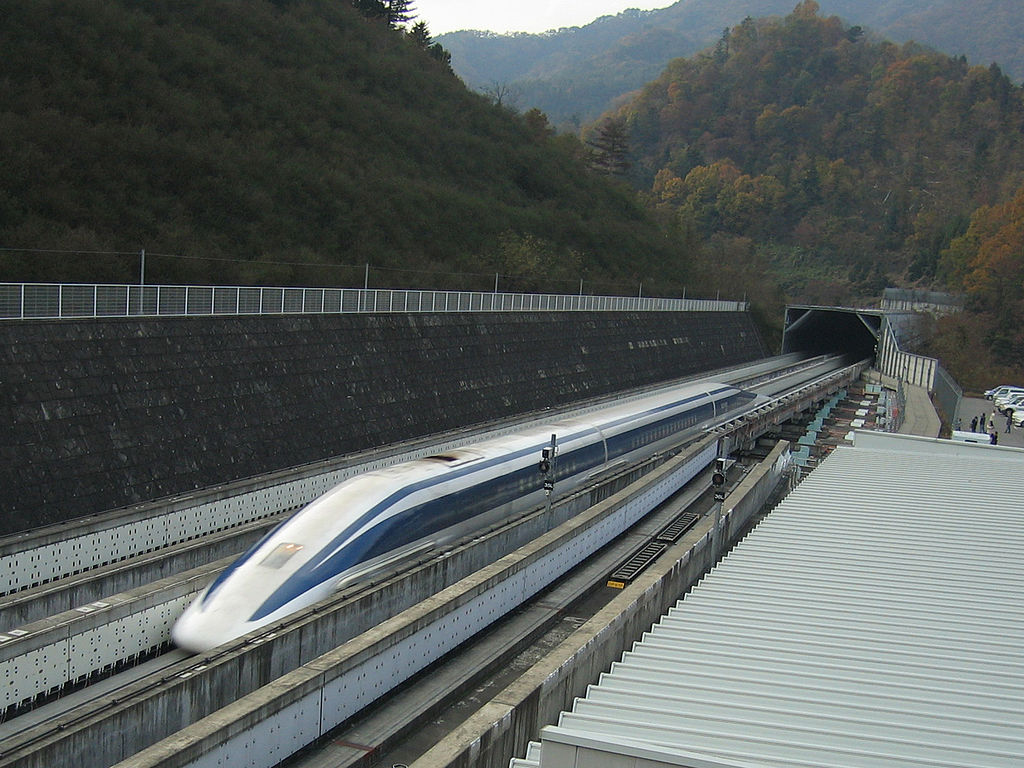
Japan's maglev train
(Image Credit: Yosemite, via Wikimedia)
Maglev technology is becoming more and more advanced. Engineers at China’s Southwest Jiaotong University are working on super-maglev trains, which would utilize maglev technology and a vacuum tube that could catapult trains up to 600 miles per hour. (Theoretically, a super-maglev train ride between Washington and NYC could take only 30 minutes).
Another even more innovative form of futuristic train travel is the hyperloop, a method proposed by Elon Musk. Basically, hyperloops feature people in small “pods” being shot through tubes at speeds of over 700 miles per hour. Maglev technology keeps the pods aloft as air pressure volleys them through super-maglev tubes. Strictly speaking, hylperloops aren’t really trains — in fact, they’re something totally new, something that resembles many a sci-fi innovation.
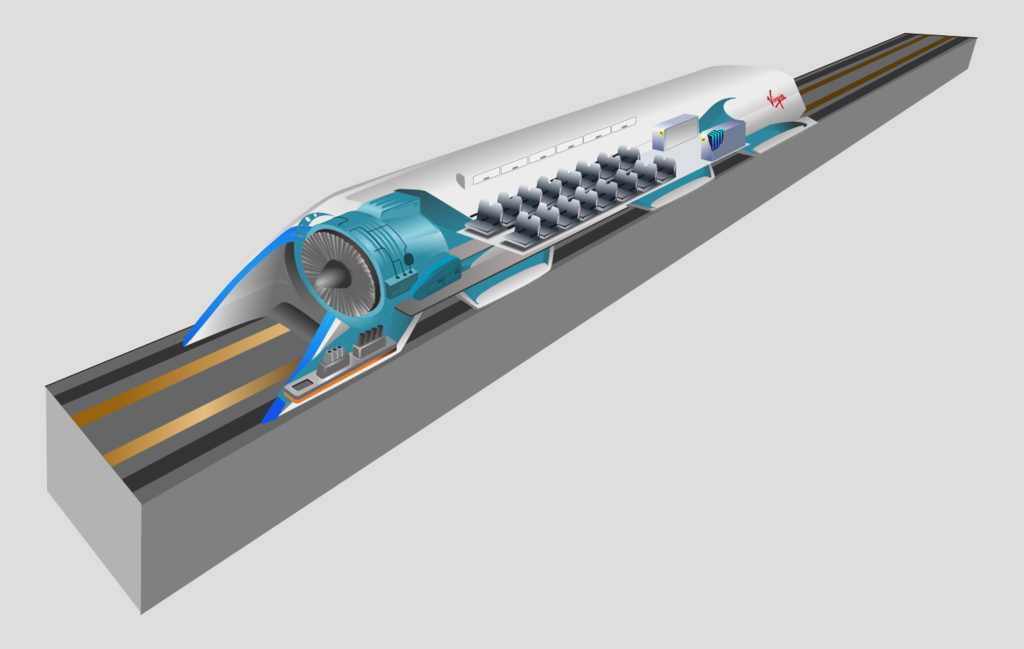
Concept art of Hyperloop inner works (Image Credit: Camilo Sanchez, via Wikimedia)
While hyperloop technology is still in development, a number of engineers and venture capital groups are working on the project today, tempted by the dream of a much faster and more energy-efficient method of travel (as well as potential cash rewards).
Regardless of how we get there, the need for green transit is becoming more urgent with each passing year.
The Need for Green Rail Transit
It can be difficult to find environmentally sustainable ways to travel, but rail transit is likely the most eco-friendly option we have for the foreseeable future. No matter their fuel source, trains release far fewer greenhouse gases than the average airplane or car, and they are also capable of carrying many more people at once than an automobile, bus, or airplane.
As the global effort to reduce our reliance on dangerous fossil fuels gains steam (pardon the pun), innovations like hydrogen-powered trains appear to hold great promise.
The development of so-called “hydrail” trains has been in progress since 2002, when the first hydrogen-powered locomotive departed a station in Quebec. In 2016, Germany finally saw the debut of the Coradia iLint, the world’s first hydrogen-powered passenger train, which is capable of traveling 600 miles on a single tank of hydrogen.
Malaysia, the United States, Japan, India, and many other nations are currently in the process of developing water-powered trains, viewing them as sustainable investments in the fight against climate change.
“Our wisest long-term investment is not in the dirty polluting fossil fuels from the past, but in the clean energy of the future.” —London Breed
In 2019, the world’s first solar-powered train was introduced in the United Kingdom. And in February 2020, the country unveiled the Hydroflex, its first water-powered train. The U.K. is already a master of the art of low-emission travel, with 42% of its rails electrified, and the goal is to have 100% of its rails running on a renewable energy source by 2040.

Hydroflex train in the U.K. (Source: Wikipedia)
Replacing all the world’s diesel trains with high-speed, clean energy-powered rail systems would be a gigantic effort. But doing it would provide millions of jobs of the sort that ecological plans like the U.S.’s Green New Deal propose – and it might also save a lot of money in the long run (not to mention its environmental and logistical benefits).
“We can avert climate disaster by making our cities more just and prosperous. To make this transition, we need to overhaul our polluting, expensive, inequitable transportation systems,” said David Bradgon, executive director of the group TransitCenter. “With a large-scale investment in transit service, we’ll bring affordable, convenient transportation within reach of millions more people while creating well-paying jobs and rapidly cutting emissions.”
In short, a massive investment in ecologically friendly high-speed rail would allow more people to travel further while reducing the effects of climate change. And wouldn’t a system of super-futuristic, high-speed trains powered by the sun, water, and air be a magnificent sight to behold?
Where the Past and the Future Meet: Trains on the Cutting Edge of a Global Shift
Something about trains has always reminded me of nature; perhaps it’s the labyrinthine nature of their tracks, which resembles tree roots linking up underground or rivers reaching out to the sea.
Yet despite their similarities to nature, trains are fundamental aspects of our ever-expanding, technology-driven modern world. They’re also symbols of the moment we humans began to claim the land as our own and the world after. Could they help us into the next phase of our evolution, into the era when we begin to take better care of ourselves and the planet?
Trains have reliably assisted humanity at every stage of our journey on Earth for the past few hundred years, so it seems feasible. “Trains, like time and tide, stop for no one,” Jules Verne once wrote. And it’s true: Trains never stop changing, just like humans.
Only a massive shift to accessible green infrastructure will help us combat the devastating effects of climate change and unchecked environmental destruction. But if this shift occurs, green transit seems poised to be a central part of our future (that is, if we’d like to have one). Maybe in 20 years, we’ll all be riding bullet trains from Washington D.C. to New York City, enjoying a green job-powered economy and eating a salad grown from our rooftop gardens.

Rothenburg rooftop garden, Cincinnati, Ohio (Source: Minnesota Agriculture in the Classroom)
In another version of the future, if humans fail to save our world, all our trains could become overgrown relics, their tracks having been flooded or destroyed in the hurricanes that will inevitably be the result of climate disaster.
We currently stand at a fork in the tracks between those two paths. But if the history of trains can teach us anything, it’s that humans and trains have always been an unstoppable pair. Certainly, we can lay our next tracks in the direction of a better future.
Ω
Title image of high speed trains at Zuoying Station, courtesy of Cheng-en Cheng, via Wikimedia.
